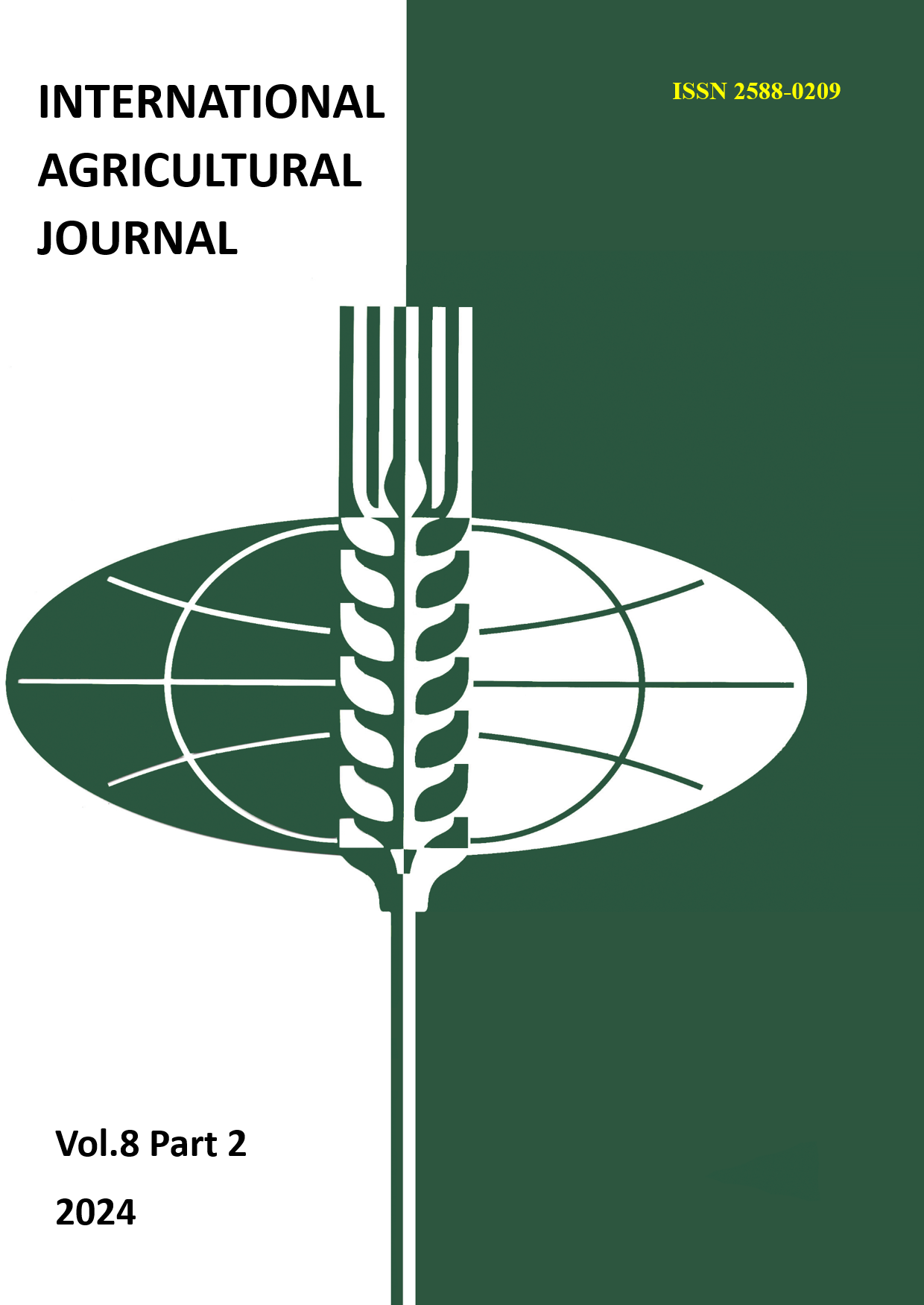CONTROL OF TWO SPOTTED SPIDER MITES TETRANYCHUS URTICAE KOCH, 1836 (ACARI: TETRANYCHIDAE) BY APPLICATION EXTRACTS ON BEAN PLANT
Main Article Content
Abstract
Chemical control used in agriculture is the most frequently used control method against agricultural pests today. However, in recent years, this method has serious negative effects on living-environmental health and beneficial microorganisms, as well as many reasons such as the development of resistance of disease, pest and weed factors against agricultural pesticides used in chemical control, forcing researchers to develop different alternatives within an integrated control system. he pushed. Tetranychus urticae Koch. (Acari: Tetranychidae) causes serious economic losses in many vegetables, fruits, industrial and ornamental plants. Resistance to acaricides in T. urticae is still an important problem both in our country and around the world. Due to reasons such as its high reproductive power and rapid development of resistance to pesticides, pesticides are intensively used against this pest. This study aimed to reveal the effectiveness of herbal extracts such as peppermint and lemon instead of pesticides on T. urticae as an alternative control method. This study was carried out in Tatarlı village of Shamkir district in 2022-2023. Various attractant and repellent effects on T. urticae adults were investigated under field conditions by applying two different extracts prepared from peppermint and lemon to the bean plant in different ways, including seed and leaf application. For this purpose, White bean variety was searched. 30% ethanol was used in the preparation of the Peppermint and Citrus lemon extracts. Accordingly, as a result of mite counts (visual control), among all treatments, only lemon extract seed application showed a significant repellent effect on T. urticae, at a rate of 37.12%, compared to the control application. It was determined that lemon extract leaf application attracted 20.3% more mite individuals than the control application, and this application was found to have a more attractant effect on individuals. It was determined that T. urticae was sensitive to herbal essential oils and lemon-containing seed application had a more repellent effect on individuals.
Article Details
References
2. Amer, S. A. A., Awad, A. and El-Banhaway, E. M., 1993. Toxicity of the orange peel and lemon grass oils to the spider mites Tetranychus urticae and Eutetranychus orientalis with effects on the development and reproduction (Acari: Tetranychidae). African Journal of Agricultural Sciences, 20 (1): 95- 102.
3. Amer, S. A. A. and Momen, F. M., 2002. Effect of some essential oils on the predacious mite Amblseius swirskii (Acari: Phytoseiidae). Acta Phytopathologica et Entomologica Hungarica, 37 (27): 1-3
4. Chermenskaya, T., Stepanycheva, E., Shchenikova, A. and Chakaeva, A., 2010. Insect to acaricidal and deterrent activities of extracts of Kyrgyzstan plants against three agricultural pests. Industrial Crops and Products, 32 (2010): 157-163.
5. Elhalawany, A. and Dewidar, A., 2017. Efficiency of some plant essential oils against the two-spotted spider mite, Tetranychus urticae koch and the two predatory mites Phytoseiulus persimilis (A.-H.), and Neoseiulus californicus (McGregor). Egyptian Academic Journal of Biological Sciences A. Entomology, 10 (7): 135-147.
6. Hussein, H., Salem, M. and Soliman, A., 2017. Repellent, attractive, and insecticidal effects of essential oils from Schinus terebinthif olius fruits and Corymbia citri odora leaves on two white flyspecies, Bemisia tabaci, and Trialeuro desricini. Scientia Horticulturae, 216 (2017): 111-119.
7. Laborda, R., Manzano, I., Gamon, M., Gavidia, I., Bermudez, P. and Boluda, R., 2013. Effects of Rosmarinus officinalis and Salviao fficinalis essential oils on Tetranychus urticae koch (Acari: Tetranychidae). Industrial Crops and Products, 48 (2013): 106-110.
8. Mensah, F., Inkum, I., Agbale, C. and Eric, A., 2014. Comparative evaluation of the insecticidal and insect repellent properties of the volatile oils of Citrus aurantifolia (lime), Citrus sinensis (sweet orange) and Citrus limon (lemon) on Camponotus nearcticus (carpenter ants). International Journal of Novel Reseaerch in Inter disciplianry Studies, 1 (2): 19-25.
9. Woolley, J. R. L., Ildefonso, T. D. and Voss, C. J., 1991. Bean cropping systems in the tropics and subtropic and their determinants. Field Crops 34 Abstracts, Vol 44.
10. Yeşilayer, A., 2018. The repellency effects of three plant essential oils against the two-spotted spider mite Tetranychus urticae. Applied Ecology And Environmental Research, 16 (5): 6001-6006.
11. https://www.stat.gov.az/source/agriculture/az/2.126.xls
12. R. M. Haciyev, R. A. Saidov, G. B. Mammadov, U.T.Taghiyev, G. Allahverdiyeva. Analysis of the main design and operating parameters of the device for the fermentation of bird droppings / EUREKA: Physics and Engineering, 5, 00–00. https://doi.org /10.21303/2461-4262.2022.002306 link_1 or link_2 https://journal.eu-jr.eu/engineering/issue/view/217
13. Haciyev, R., Salmanova, K., Mammadov, G., U.T.Taghiyev. Application of intensive techno¬logies for improved production processes in poultry farms./ Eastern-European Journal of Enterprise Technologies, 4 (1 (118)), (2022) pp.90–102. doi: https://doi.org/10.15587/1729-4061.2022.262999

